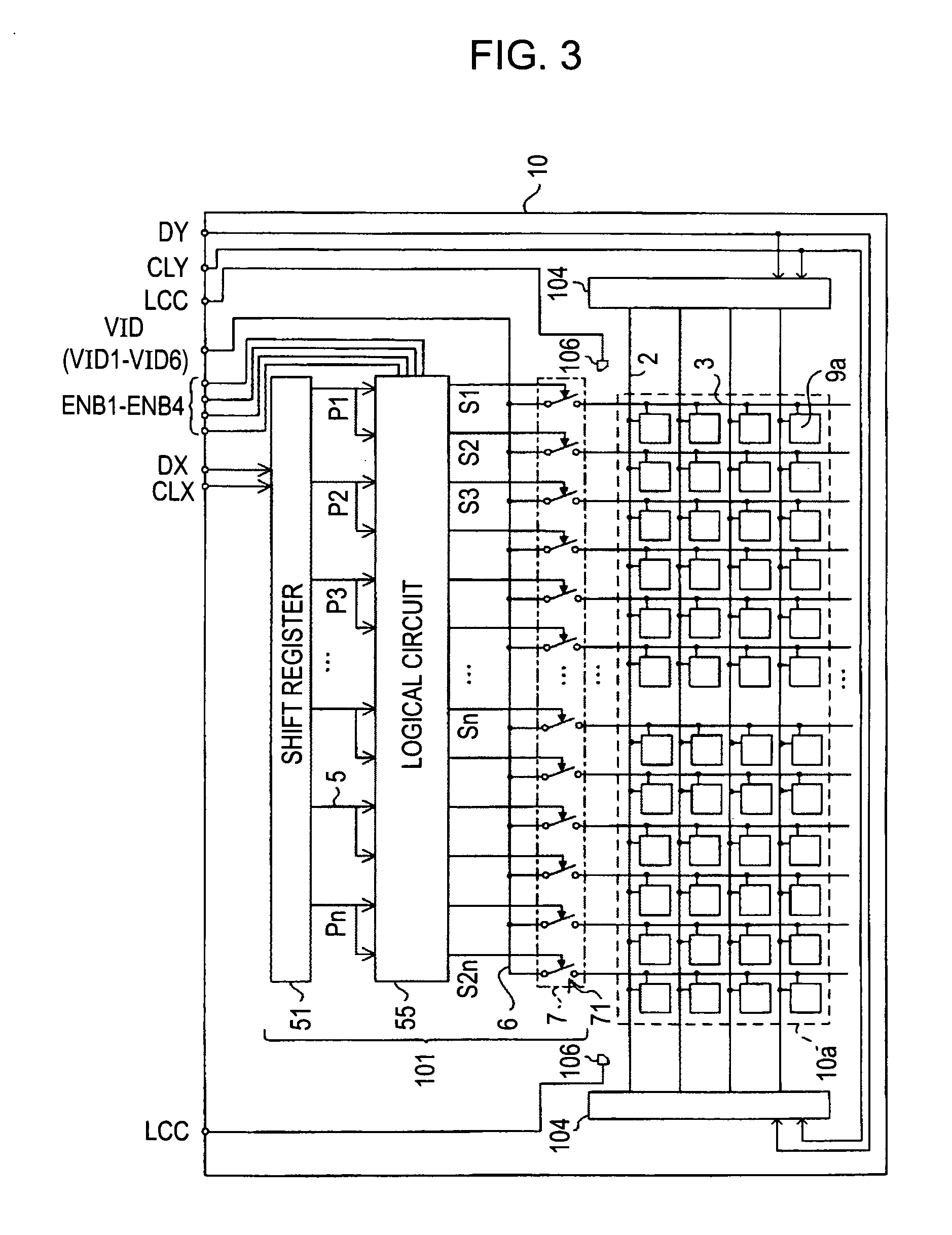Electro-optical-device driving circuit, electro-optical device, and electronic apparatus
a driving circuit and electrooptical technology, applied in static indicating devices, instruments, non-linear optics, etc., can solve the problems of reducing resolution and an increase in manufacturing costs, deteriorating display quality, and small distance between unit circuits using common wiring lines thereof, so as to prevent display defects from appearing and increase driving frequency
- Summary
- Abstract
- Description
- Claims
- Application Information
AI Technical Summary
Benefits of technology
Problems solved by technology
Method used
Image
Examples
Embodiment Construction
[0046] Preferred embodiments of the invention will be described with reference to FIGS. 1 to 6. In the following embodiment, an electro-optical device of the invention is applied to a liquid crystal display device.
Structure of Liquid Crystal Display Device
[0047] The overall structure of a liquid crystal display device according to an embodiment of the invention will be described with reference to FIGS. 1 to 3. FIG. 1 is a plan view of the liquid crystal display device, as viewed from a counter substrate, and FIG. 2 is a cross-sectional view taken along the line II-II of FIG. 1.
[0048] In FIGS. 1 and 2, the liquid crystal display device includes a TFT array substrate 10 and a counter substrate 20 which are opposite to each other. A liquid crystal layer 50 is interposed between the TFT array substrate 10 and the counter substrate 20, and the TFT array substrate 10 and the counter substrate 20 are bonded to each other by a sealing material 52 provided in a sealing region located aro...
PUM
| Property | Measurement | Unit |
|---|---|---|
| transmission | aaaaa | aaaaa |
| width | aaaaa | aaaaa |
| pulse widths | aaaaa | aaaaa |
Abstract
Description
Claims
Application Information
 Login to View More
Login to View More - R&D
- Intellectual Property
- Life Sciences
- Materials
- Tech Scout
- Unparalleled Data Quality
- Higher Quality Content
- 60% Fewer Hallucinations
Browse by: Latest US Patents, China's latest patents, Technical Efficacy Thesaurus, Application Domain, Technology Topic, Popular Technical Reports.
© 2025 PatSnap. All rights reserved.Legal|Privacy policy|Modern Slavery Act Transparency Statement|Sitemap|About US| Contact US: help@patsnap.com



